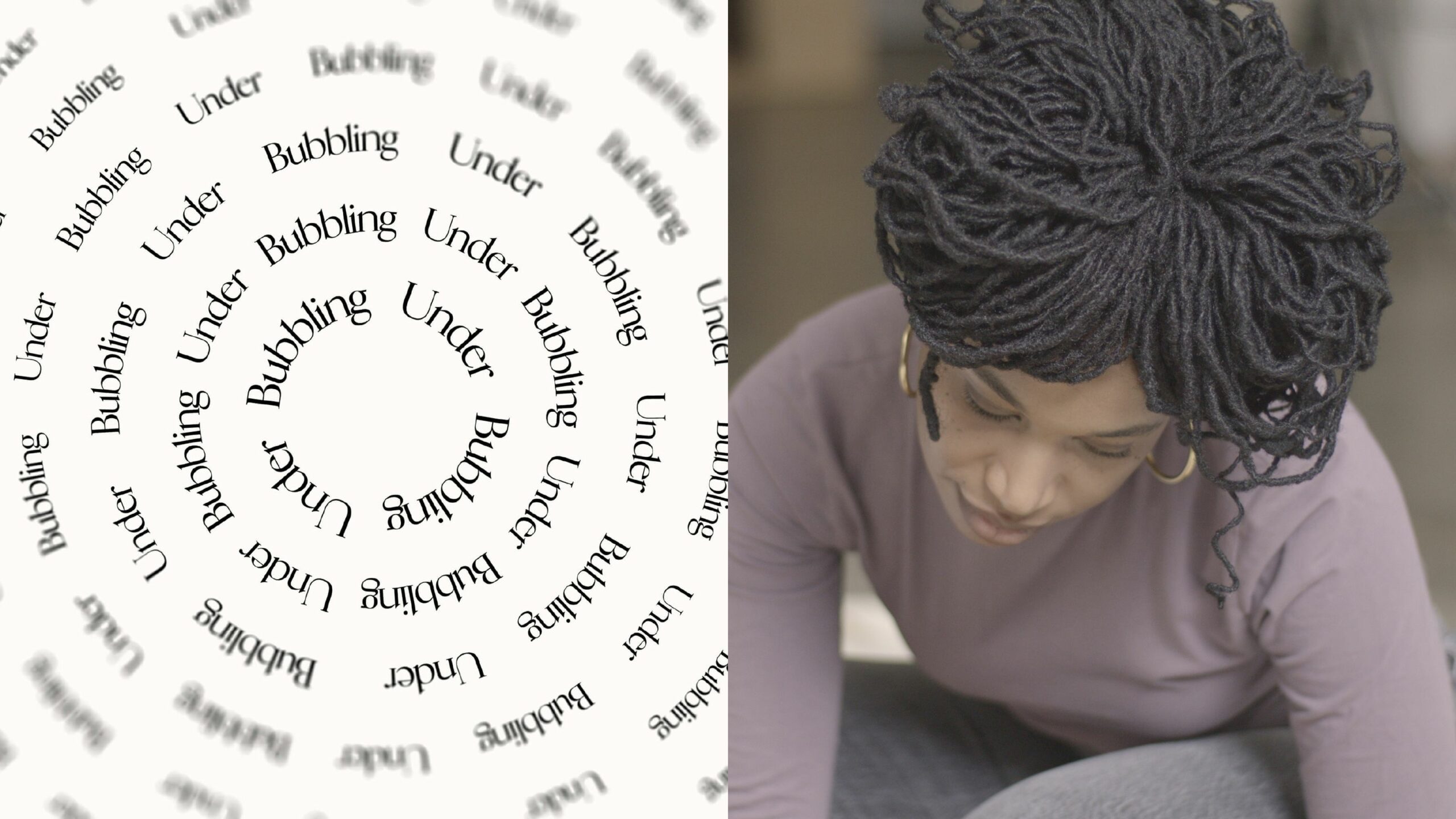Espoo Museum of Modern Art
Mobile guide to the Tschabalala Self: Around the Way exhibition

American artist Tschabalala Self (b. 1990) regards herself primarily as a painter, although her works can also be seen as collages. In addition to painting with various pigments Self incorporates textiles, threads and printmaking in her works. She uses recycled materials and often draws details with a sewing machine. Her life-size sculptures are like three-dimensional paintings that form narrative scenes together with the works the on walls.
Self explores themes related to race and gender in her work. Although the artist draws on her personal experiences as a Black American woman, the paintings feature imagined figures. Self depicts bodies that are both exalted and objectified in Western imagery and art history. By deconstructing and reimagining this imagery, she creates a new kind of narrative surrounding the Black body.
Self was born and raised in Harlem, New York. The title of the exhibition, Around the Way, is a Black American expression describing an individual who is from and of the neighbourhood and possesses a specific quality of being that can only be found amongst that community. Together the works present a portrait of such individuals. Claiming space in their streets, homes and most intimate spaces, they determine how they are seen and understood.
Tschabalala Self: Around the Way is part of the InCollection exhibitions series co-produced by EMMA and Saastamoinen Foundation. Each year, InCollection commissions a new work by a visionary contemporary artist. Self is the seventh artist in the series.
Playlist
The exhibition includes a playlist created by the artist. Listen to it during your museum visit or at home!
Artworks
12pm on 145th Street

Tschabalala Self, 12pm on 145th Street, 2022
denim, digital printed t-shirt, velvet, lace, tulle, painted canvas, dyed canvas, acrylic and vinyl emulsion paint on canvas
This three-part painting is named after an intersection in Harlem, New York. The other works in the room also feature the distinctive quality of the neighbourhood. For Tschabalala Self, the public urban space is a stage for shared experiences and encounters, as well as for artistic and political self-expression. A city is like a tapestry woven from the built environment and its inhabitants, whose daily routines and interactions form a single living entity. Self’s works with their countless details convey a similar sense of layering.
Anthurium

Tschabalala Self, Anthurium, 2023
hand-dyed canvas, velvet, cotton cloth, painted canvas, thread, pastel, acrylic and oil on canvas
The title of this work, Anthurium, is the scientific name for the flamingo flower. This popular house plant is generally regarded as a symbol of hospitality and abundance. For Tschabalala Self, it also signifies inner growth, joy and optimism amidst changing life circumstances. During the COVID-19 lockdowns in 2020, Self became interested in the home as a site of personal expression and presentation. In this room, all depicted figures are shown in a domestic setting. Within the safety of their home, they can decide how they want to be seen. For the artist, the idea of home also encompasses the body and the inner world of her characters, their dreams and their passions.
Dreamers

Tschabalala Self, Dreamers, 2021
fabric, thread, painted canvas, vinyl emulsion paint, acrylic and oil on canvas
This diptych shows two lovers reclining, each on their own canvas, facing one another. The artist has described the scene as romantic. Without physical touch, yet dreaming of one another, the lovers are at the same time together and independent. In this room, all figures are shown in a private space where intimate relationships are built and maintained. The paintings depict different ways of being together, with relationships ranging from harmonious to one-sided.
Watch Tschabalala Self's video portrait on EMMA Zone

→ www.emmazone.fi ←
EMMA Zone is the digital home of EMMA. The site offers a variety content about art, design and the museum’s work under four categories: Thinking Zone, Behind the Scenes at EMMA, Bubbling Under and Children’s Art Questions.
EMMA Zone – always open for art!